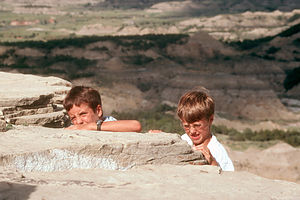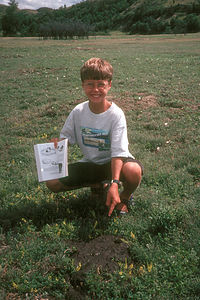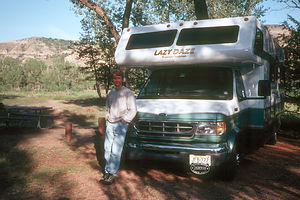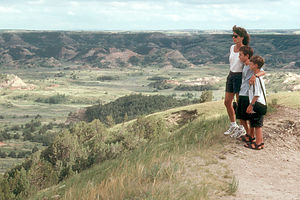- Home
- About
- Map
- Trips
- Bringing Boat West
- Migration West
- Solo Motorcycle Ride
- Final Family XC Trip
- Colorado Rockies
- Graduates' XC Trip
- Yosemite & Nevada
- Colorado & Utah
- Best of Utah
- Southern Loop
- Pacific Northwest
- Northern Loop
- Los Angeles to NYC
- East Coast Trips
- Martha's Vineyard
- 1 Week in Quebec
- Southeast Coast
- NH Backpacking
- Martha's Vineyard
- Canadian Maritimes
- Ocracoke Island
- Edisto Island
- First Landing '02
- Hunting Island '02
- Stowe in Winter
- Hunting Island '01
- Lake Placid
- Chesapeake
- Provincetown
- Hunting Island '00
- Acadia in Winter
- Boston Suburbs
- Niagara Falls
- First Landing '99
- Cape Hatteras
- West Coast Trips
- Burning Man
- Utah Off-Roading
- Maui
- Mojave 4WD Course
- Colorado River Rafting
- Bishop & Death Valley
- Kauai
- Yosemite Fall
- Utah Off-Road
- Lost Coast
- Yosemite Valley
- Arizona and New Mexico
- Pescadero & Capitola
- Bishop & Death Valley
- San Diego, Anza Borrego, Joshua Tree
- Carmel
- Death Valley in Fall
- Yosemite in the Fall
- Pacific Northwest
- Utah Off-Roading
- Southern CA Deserts
- Yosemite & Covid
- Lake Powell Covid
- Eastern Sierra & Covid
- Bishop & Death Valley
- Central & SE Oregon
- Mojave Road
- Eastern Sierra
- Trinity Alps
- Tuolumne Meadows
- Lake Powell Boating
- Eastern Sierra
- Yosemite Winter
- Hawaii
- 4WD Eastern Sierra
- 4WD Death Valley +
- Southern CA Deserts
- Christmas in Tahoe
- Yosemite & Pinnacles
- Totality
- Yosemite & Sierra
- Yosemite Christmas
- Yosemite, San Diego
- Yosemite & North CA
- Seattle to Sierra
- Southwest Deserts
- Yosemite & Sierra
- Pacific Northwest
- Yosemite & South CA
- Pacific Northwest
- Northern California
- Southern Alaska
- Vancouver Island
- International Trips
- Index
- Tips
- Books
- Photos/Videos
- Search
- Contact
Theodore Roosevelt National Park (South Unit), ND
Wednesday, July 19, 2000 - 4:00am by Lolo
237 miles and 4 hours from our last stop - 1 night stay
Travelogue
We began our visit to Theodore Roosevelt National Park at the Painted Canyon Visitor Center about 7 miles east of the entrance to the South Unit of the Park. There we got our first glance of the multicolored buttes and mounds that make up the badlands of North Dakota. Gazing down at them, I couldn't help thinking that "badlands" was the wrong name for something so strikingly beautiful. I guess it's what you expect from them. The early settlers were looking for lands to farm; they didn't have the luxury of just sitting back to enjoy their beauty as we did.
 Boys climbing Theodore Roosevelt ParkWe took the trail down from the Visitor Center to hike the loop trail through the Painted Canyon. This really was wild country and so remote that you felt like you had it all to yourself. We could see that we were really going to like this place.
Boys climbing Theodore Roosevelt ParkWe took the trail down from the Visitor Center to hike the loop trail through the Painted Canyon. This really was wild country and so remote that you felt like you had it all to yourself. We could see that we were really going to like this place.
Back in the Visitor Center after our hike, Tommy wandered over to the nature book section and starting poring over the many field guides they had on display. This was something new and something I definitely wanted to encourage. After much deliberation, he selected the Peterson Field Guide to Animal Tracks, and spent the rest of the day with his nose buried in the book, blurting out interesting information as he read along. This loss of his little brother to a book started to bug Andrew, who chose to support Tom's new-found hobby by singing a song about "Nature Tom." After we pulled Tommy off of Andrew's neck, we strongly suggested that they try to enjoy animal tracking together.
 Tom with Bison ScatWe stopped at the Medora Visitor Center in the park and took the brief tour of the Maltese Cross Cabin, which was used by Teddy Roosevelt during his ranching days here. Apparently, Roosevelt came here in 1883 to hunt bison and then eventually went into a partnership on a cattle ranch. He loved these badlands so much that he said he wouldn't have been president if it hadn't been for his experiences here. Fortunately for us, the park is so remote and unspoiled that it hasn't changed much from the days that Roosevelt spent here.
Tom with Bison ScatWe stopped at the Medora Visitor Center in the park and took the brief tour of the Maltese Cross Cabin, which was used by Teddy Roosevelt during his ranching days here. Apparently, Roosevelt came here in 1883 to hunt bison and then eventually went into a partnership on a cattle ranch. He loved these badlands so much that he said he wouldn't have been president if it hadn't been for his experiences here. Fortunately for us, the park is so remote and unspoiled that it hasn't changed much from the days that Roosevelt spent here.
We decided to stop at our campground for lunch so that we could select a site before taking the scenic drive through the park. As usual, I had my campground reservation papers ready, happy knowing that we would have a place to stay. Herb was quite amused as we pulled into the totally empty Cottonwood Campground and had our choice of any site we wanted. After a brief drive around the entire campground, we agreed on the perfect site, nestled among the cottonwood trees overlooking the Little Missouri River. Upon closer inspection we noticed that there was one problem, or advantage depending on how you looked at it. A very large bison was lying in the grass alongside the river about 50 feet away, totally disinterested in the fact that he had new neighbors. I at first questioned the wisdom of this site, but was quickly overruled by "Nature Tom" and his new partner. What better place to start animal tracking.
 Herb with Lazy DazeAndrew and Tom immediately wanted to go down to the river and look for tracks, but I was a little nervous about this large bison charging them or something. We stopped a ranger driving by and asked him about the bison. "Oh, that's George," he replied. "He lives here." He then explained to us that George was an old bull kicked out of his herd by the younger male bulls. Apparently, that's the destiny that awaits all male bison. Rather than fearing George, I now felt sorry for him and wanted to invite him over for dinner or something.
Herb with Lazy DazeAndrew and Tom immediately wanted to go down to the river and look for tracks, but I was a little nervous about this large bison charging them or something. We stopped a ranger driving by and asked him about the bison. "Oh, that's George," he replied. "He lives here." He then explained to us that George was an old bull kicked out of his herd by the younger male bulls. Apparently, that's the destiny that awaits all male bison. Rather than fearing George, I now felt sorry for him and wanted to invite him over for dinner or something.
On the path down to the river, Tommy found a large animal track, which he immediately began to study. He got down on his knees, methodically analyzing and measuring it and comparing it to tracks in his field guide, obviously truly enjoying himself. "Maybe elk or moose," he mumbled. At this point, his ever faithful brother picked a tuft of bison hair from the track and yelled, "It's a bison track, you idiot, and it's right over there!" This triggered another one of our talks with Andrew about being supportive of his little brother.
 George, the lonely bisonWe decided it was time to take the scenic drive through the park. Our first stop was a prairie dog town, where we watched cute little prairie dog heads popping up out of hundreds of mounds in a field. Apparently, there is an intricate system of tunnels underground connecting these holes, creating an entire city for these little creatures. Along the edge of prairie dog town, the kids performed their first "scat" identification of an animal. We found prairie dog turds, bison pies, elk droppings, and much more. Now Andrew was getting into it.
George, the lonely bisonWe decided it was time to take the scenic drive through the park. Our first stop was a prairie dog town, where we watched cute little prairie dog heads popping up out of hundreds of mounds in a field. Apparently, there is an intricate system of tunnels underground connecting these holes, creating an entire city for these little creatures. Along the edge of prairie dog town, the kids performed their first "scat" identification of an animal. We found prairie dog turds, bison pies, elk droppings, and much more. Now Andrew was getting into it.
We continued our drive stopping to hike the Ridge Trail and Buck Hill. It really was beautiful country--so unspoiled and remote. There was nobody here--nothing like our previous experiences at national parks and surely not what we would find at Yellowstone.
That night back at the campsite, we actually got some real neighbors, an elderly couple from Phoenix traveling on a Honda Gold Wing, complete with a little trailer for their camping gear. I know that is what Herb has planned for me some day when the kids are grown and gone. I told him to be careful or George's fate was what I had planned for him.
After dinner, rather than going back in the RV to watch TV, the kids stayed out with us, passing the time talking and whittling poker chips out of cottonwood branches. These chips are still in the RV--a treasured memory of the brief but special time we had spent here. The evening was perfect--filled with a sense of contentment.
Nothing had prepared us for the way we would feel about the badlands of North Dakota. We had no special expectations about our visit here--it was merely a stop along the way to Glacier National Park. Yet something about the remoteness and rugged beauty of this strange land touched us in a way that few places ever would again.
Description
Theodore Roosevelt National Park encompasses more than 70,000 acres of the rugged badlands of North Dakota. This strange landscape is the result of a process that began more than 60 million years ago when sediment washed down from the young Rocky Mountains and covered the dense vegetation on the Great Plains, turning it into lignite coal. Sometimes this lignite would ignite, baking the gray clay above it into a reddish material known as scoria. As sediment continued being deposited, the Little Missouri River and its tributaries carved and sculpted the softer strata into the buttes, tablelands, and valleys that you see in the park today. The alternating process of depositing sediment and erosion resulted in the multicolored horizontal stripes you see running across them.
 Theodore Roosevelt Park overlookA first place to experience the beauty of the badlands is at the Painted Canyon Visitor Center and Overlook, 7 miles east of Modora, where there is a magnificent panoramic view down into the strange colorful mounds that make up the badlands. There is also a short loop hike from here that goes down into Painted Canyon.
Theodore Roosevelt Park overlookA first place to experience the beauty of the badlands is at the Painted Canyon Visitor Center and Overlook, 7 miles east of Modora, where there is a magnificent panoramic view down into the strange colorful mounds that make up the badlands. There is also a short loop hike from here that goes down into Painted Canyon.
The park is divided into a North and a South Unit, neither one of which ever gets crowded because of the remoteness of this park. The entrance to the more accessible South Unit is located right off 94 in the town of Modora. Near the Visitor Center you can tour the Maltese Cross Cabin, which is the cabin that was used by Teddy Roosevelt when he was a cattle rancher here back in the 1880s. Teddy Roosevelt spent much time here as a young man, hunting and working his ranch. He came to love and respect the badlands and said that without his experiences here he would never have been president. The park was named in his honor because he did more for the National Park System than any other president. The South Unit also has a 36-mile scenic drive which takes you onto a high plateau for excellent views of the badlands. There are overlooks and places to hike along the way.
The even more remote North Unit of the park is located about 50 miles north. It too has a scenic drive that winds through badlands considered by some to be even more beautiful than those in the South Unit.
- ‹ previous
- 8 of 25
- next ›
Theodore Roosevelt National Park (South Unit) location map in "high definition"
Javascript is required to view this map.

'I now felt sorry for him and wanted to invite him over for dinner or something' absolutely cracked me up, about my 3rd belly laugh in the last half hour at the wonderful comments on your trips. I am now bribing myself with reading some of your trip experiences AFTER completing some housework! Pasties by the way are delicious but I'm sure at somepoint you would have found that out!
Hi Helen,
Thank you for reminding me of that story. It made laugh again to think of that whole buffalo camping scene. I am so glad you are enjoying the website and I promise that my next trip through the Upper Peninsula, I will try a pastie.
Lolo
Dear Herb, Lolo and boys,
Thanks so much for sharing your traveling adventures. About eight months ago I started looking for a small motor home and in my search came across Lazy Daze of which I had never heard. I was intrigued with the quality so I started looking for a used one and in my search came across the livingwithalazydaze group and your web site. What a professional job you have done and are still doing. Since most LDs, used and otherwise, are on the west coast or southwest it took we awhile to locate one here in the east that fit my budget and other specs. I bought a 1992 22 ft LD in October and can't wait to get started exploring the country this coming spring. Your journals have been an inspiration to get up and go!! My wife and I were in Theodore Roosevelt NP in August of 2007 on our way to Glacier in a pop up tent trailer. I have a picture of her first encounter with a 1000 lb Bison on her way to the bathhouse. Camping in a tent on wheels provides some interesting night time experiences also, especially in Glacier and other places!! Wind and wild animals to name two. We had a great trip and resolved to do it again but in a more substantial camper. Thanks again for a great web site.
Carston Wagner
Wyoming, DE
Hi Carston,
Thanks for posting your background and the kind words about our web site. It's always great to hear that it is actually helping others in their own explorations of the country.
I wish you the best in your travels, and would suggest that you also try to keep a journal of your trips. Please be sure to comment again in the future when you visit some of the same parks that we did. It's always good to get some updated local knowledge to help us plan our next adventure.
Safe travels,
Herb